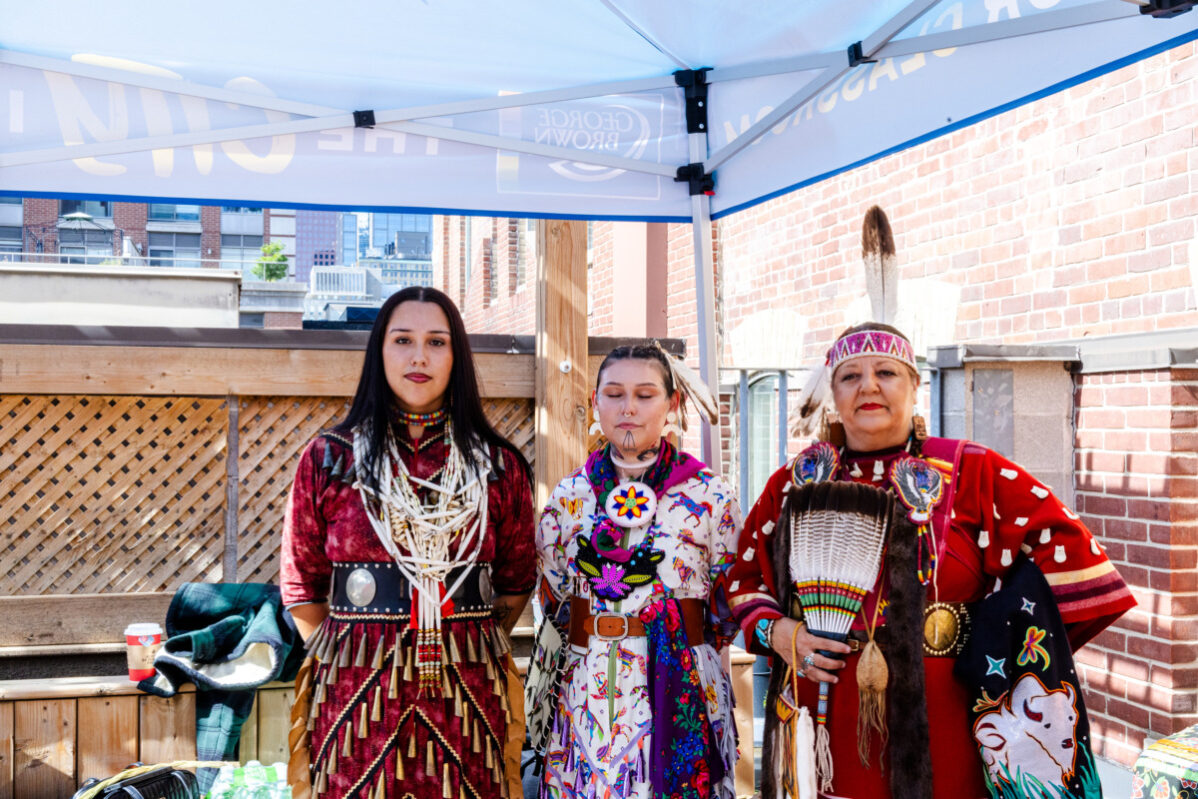Annual event returns to college campus.
On Thursday, Sep.26, George Brown College (GBC) commemorated Orange Shirt Day to remember the impact of residential schools on indigenous people.
GBC ceremony was held at St. James, and everyone was encouraged to wear an orange shirt distributed by the Indigenous Initiatives team.
Julie Debassige, elder guest of the Indigenous Initiatives Team, opened the ceremony.
“Truth needs to be recognized… Truth comes before reconciliation, and people who have come here need to recognize the history and look at the assimilation process they went through,” she said.
Using an orange shirt as a symbol is to remember one of those children; Phyllis Webstad, a six-year-old, whose personal items including an orange shirt was taken away during her first day of residential schooling. Those items were never returned to her.
Orange signifies how the feelings and emotions of her were intentionally ignored. It is symbolic color to remember her and all indigenous children, since Every Child Matter.
The GBC ceremony continued with speeches, dances, sharing of stories, playing drums and singing indigenous songs.
“The dancing is a form of prayer. It’s a way to rid the spirit of what’s weighing it down.” Debassige noted.
The Staff of Student Association (SA) participated by wearing the orange shirt, offering some services, showing their respect and commitment.
As Olufunmilayo Oguntoyinbo, support staff with the Community Care Centre (CCC) noted, “It’s very important for everyone to be aware and know the significance of this day. we are always promoting truth and reconciliation. we have our shirts on [to promote] every child matters”.
This year’s ceremony was held without the sacred fire.
Cara McArthur, Indigenous Initiatives coordinator, notes this happened because the fire should burn for four consecutive days, it had been decided not to bring the fire to the GBC. Nevertheless, the sacred fire ceremony and burning of tobacco was held across Canada so the deceased and the victims of the Residential School may rest in peace.
Indigenous children had to live in special student housing against their will during their time at the residential schools. By living in such conditions, they were intentionally isolated from their culture. Those children couldn’t even speak their language, and the school administration forced them to learn and speak either English or French.
The Residential School system in Canada officially closed the last of such schools back in 1996.
If you want to find more information about indigenous culture, workshop and event can visit https://www.georgebrown.ca/indigenous.


